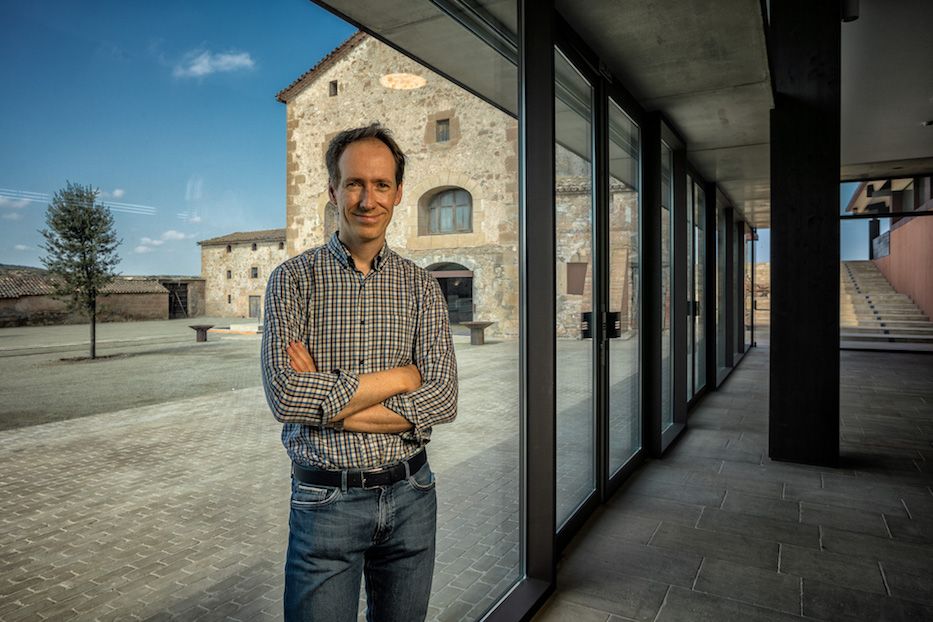Moneu, Gonfaus, Garró and Querol are just four of the ancient Catalonian grape varieties to have been rediscovered by Familia Torres.
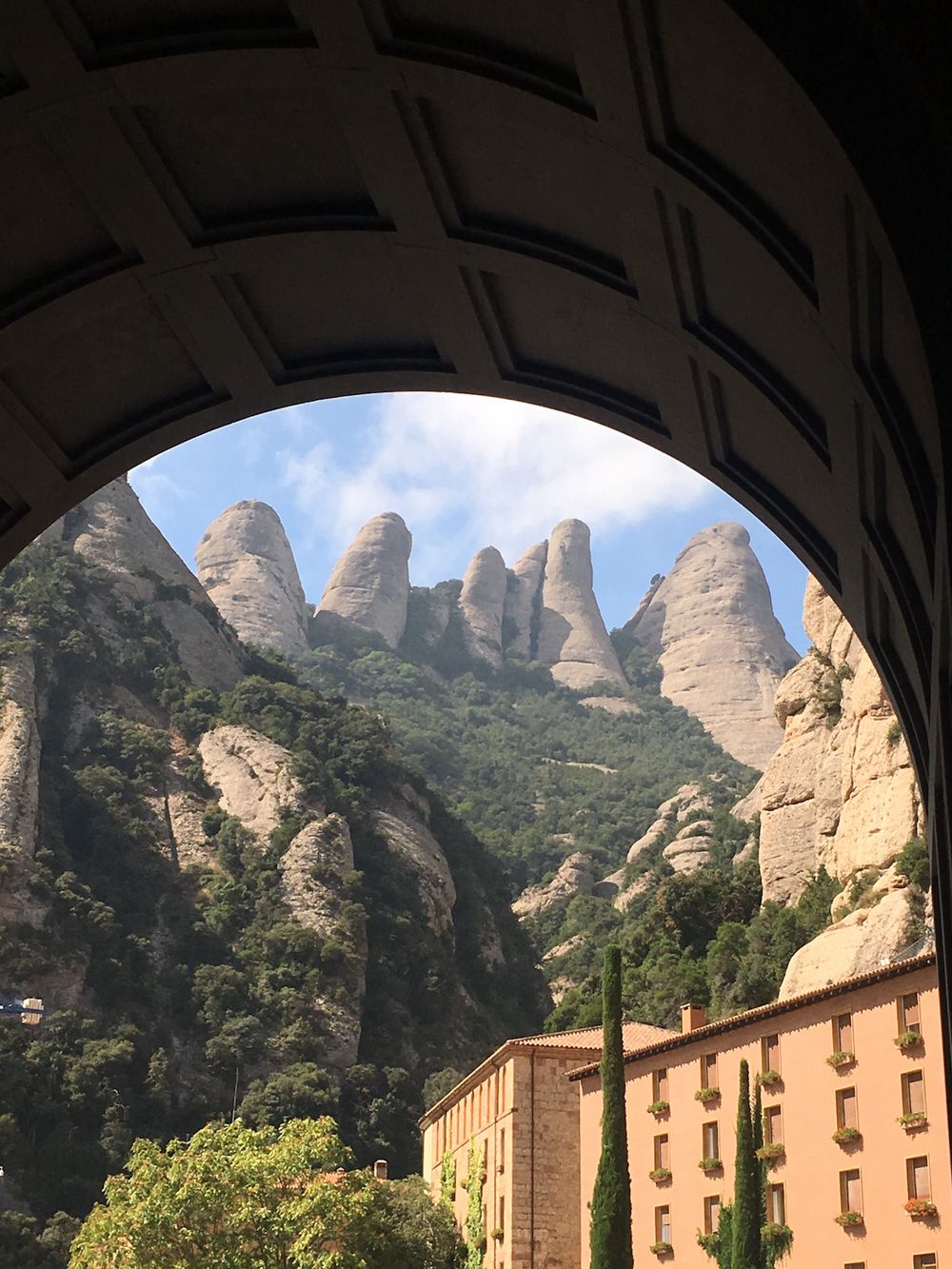
The stunning setting of Monserrat Monastery, whose farm has become Purgatori
In the 1980s, Miguel Torres Snr, the fourth generation to run Familia Torres (founded 1870), spent a sabbatical year at Montpellier University studying winemaking and viticulture. Although the university held a database of the DNA of 5,000 different grape varieties, Miguel realised that many of the traditional grapes of Catalonia had been lost, quite probably never replanted after the scourge of phylloxera.
The Torres heartland of Penedès is one of the oldest wine regions in Spain – they were fermenting the grape here for 2,700 years – and since the vine is a hugely resilient genus, able to grow wild in all manner of conditions, Miguel was convinced many of the ancient indigenous grape varieties might still be growing wild somewhere. He placed advertisements in local papers asking farmers to get in touch if they found an unidentifiable vine on their land.
He received thousands of calls.
And from those calls, they found 54 vines they could not identify and which did not appear on the Montpellier University database. They carefully gathered virus-free cells from the rediscovered vines to grow, at first in a laboratory and then in a nursery vineyard. Planted out in controlled conditions, the team at Torres were able to assess and compare the yield, the ripening time, the resistance to disease and so on.

The distinctively uneven bunch architecture of the Querol grape
What started as merely a philanthropic investigation became a time-consuming and expensive project: from vine discovery to wine production took between 15 and 18 years and included applying to the Spanish Government for approval of the new varieties (four years) and to the Catalan Government and the Appellation DO Penedès for further approvals.
Of the 54 “old-new” Catalan varieties identified, five show real promise according to Familia Torres, not only in the wines they can produce now, but in their potential to survive climatic change. To this end, Catalonia has been the perfect nursery for them, being as it is, one of the most Sahara-like wine-growing regions while also having vineyards near the Pyrenees where the climate is cooler.
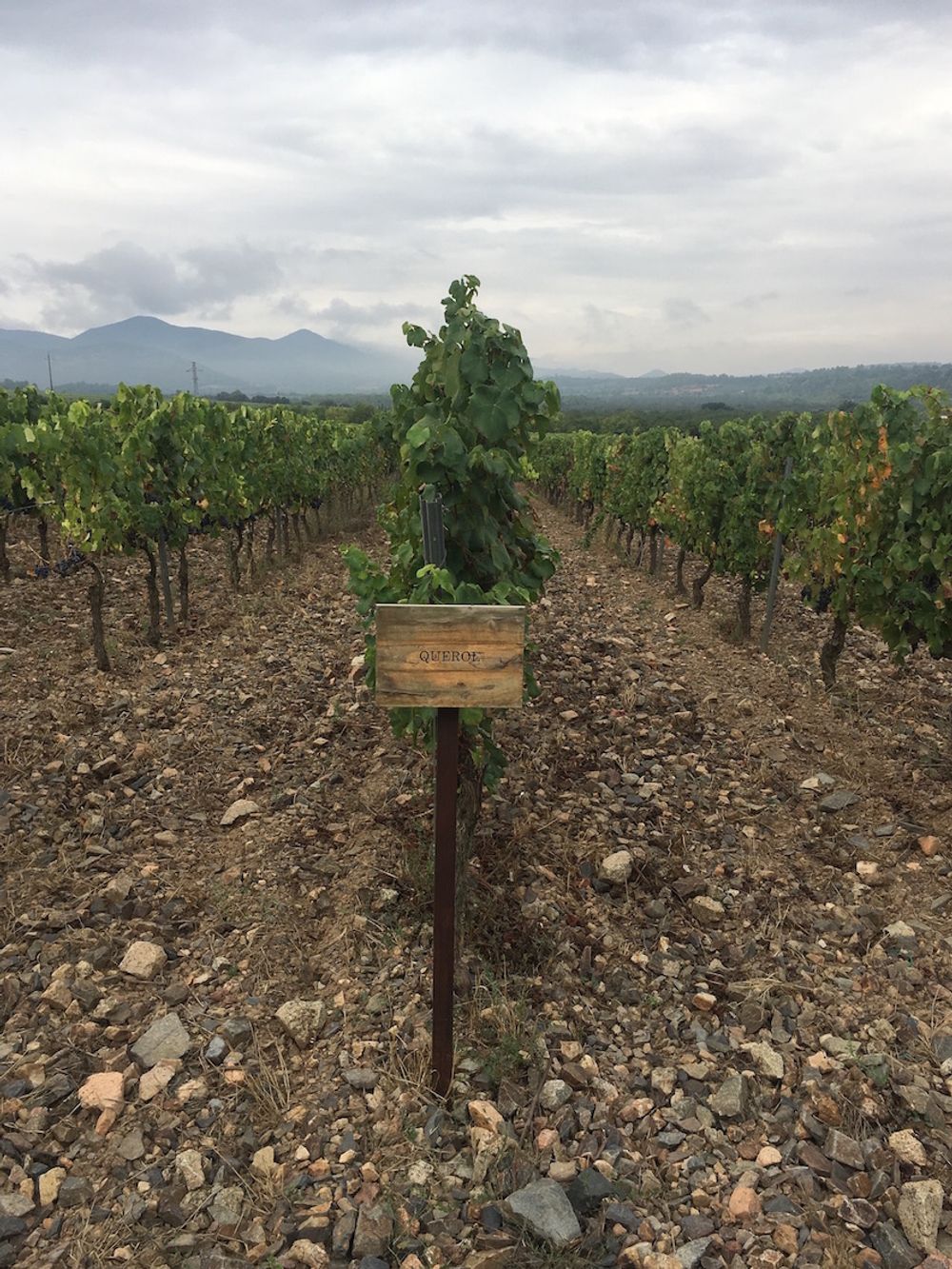
Moneu, one of the rediscovered varieties, made a first vintage in 2017 from grapes grown at Torres’s Castell de la Bleda in the Penedès DO. It produces high numbers of big bunches of big grapes and has a long maturity cycle to future-proof its success. 2017 has high acidity and low tannin with an attractive nose of plums and violets. It’s a refreshingly different wine and definitely one to watch.
By contrast, Gonfaus has a very low yield of small grapes with great intensity, grown on the Purgatori estate. It has a perfumed and intense nose with fruit, herbs and orange peel and an unusual, sharp flavour, high in acidity and low in tannin. It was been made into a single varietal wine in 2016 and is being watched carefully.
Some other old-new varieties such as Garró and Querol are used in blends such as Torres’s celebrated Grans Muralles, in the Conca de Barberà DO producing wines of remarkable character and structure.
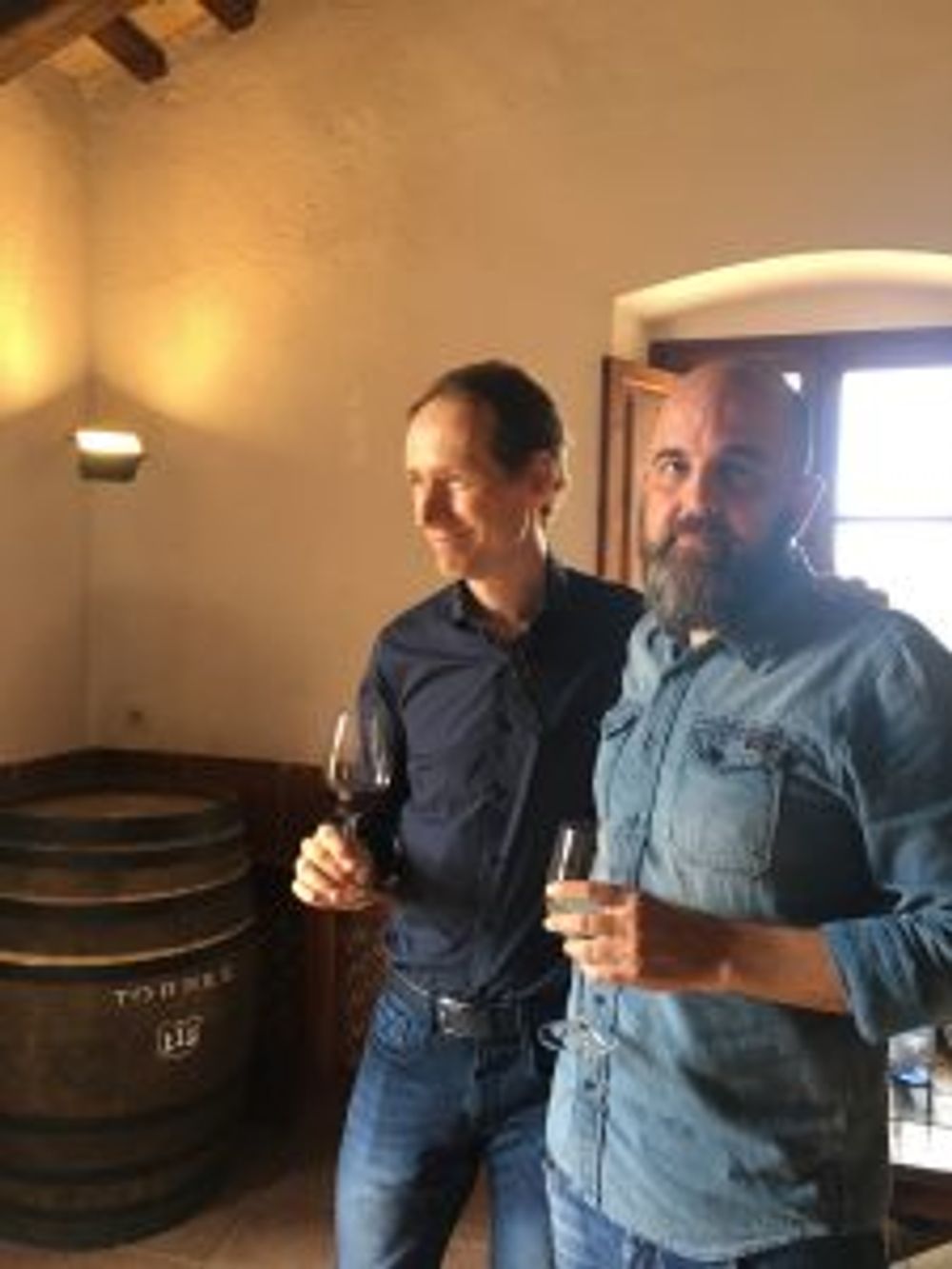
Miguel Torres (l) with Josep Sabarich Cases, chief winemaker at Familia Torres.
The newly rediscovered varieties have been named using the locations where they were found – the fields, towns or farms – and Miguel Jnr (Miguel Snr’s son) is thrilled to be continuing to experiment with these ‘clean slates’. If you don’t know the variety, you don’t know whether it thrives best at low or high altitude, shallow or deep soil; whether it blends well or ages slowly. And this has become part of a bigger investigation.
“Climate change means that we have to plant the right varieties in the right places,” Miguel says. “We are the first generation who has to think what we have to plant. My father just planted what had been planted before and it just worked well.”
Remarkable, then, that his father unknowingly started the research into old-new varieties that might be the part of the solution to the vine-growing problems of the future. “Investing in the past to reinvent the future” as Miguel Jnr says.
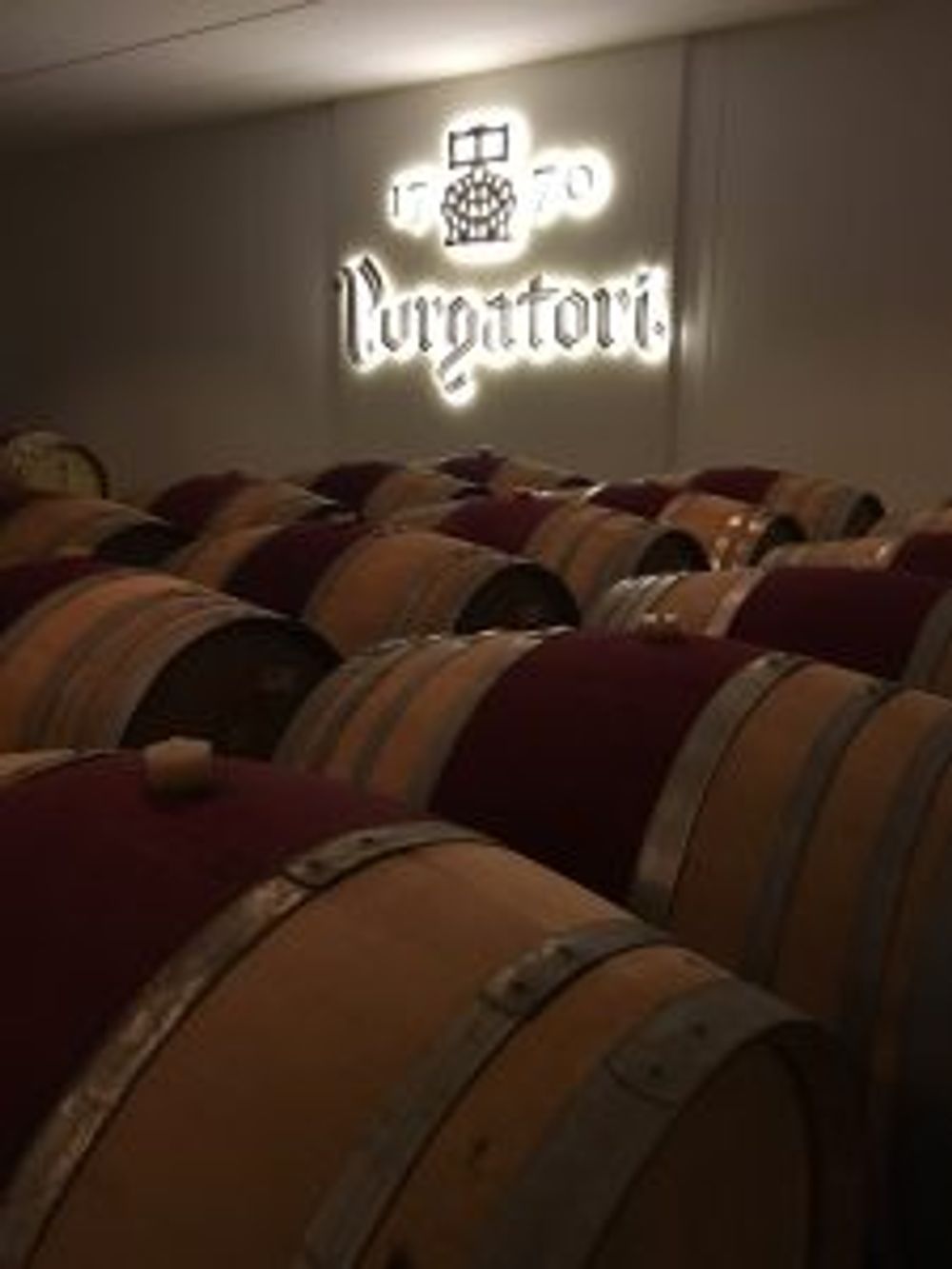
The rediscovery of these historic Catalan varietals resonates with the opening of the Torres family’s new winery, Purgatori, this September.
The winery is ultra-modern and chic, but housed in the 1770s old farm of Monserrat monastery. It has been designed and engineered to make the best wine possible without damaging the original monastic buildings.
The monastery of Monserrat sits on the ‘serrated mountain’ 700m above sea level, and badly behaved monks were sent down to the farm to make olive oil and wine for the diocese.

Given that the farm is in the middle of nowhere, surrounded by arid land and thickly forested hills, these monks were known as “the banished”, and the farm, “Purgatori”.
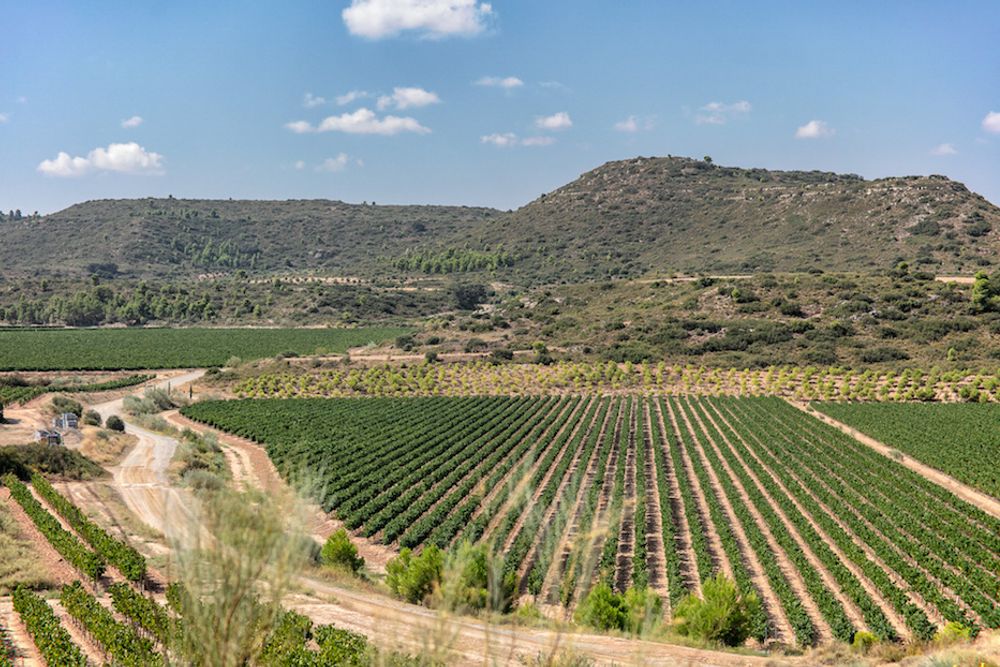
The vineyards at Purgatori
The vines here have some of the lowest yields in all Catalonia, only 1500-2000 kg/ha and Purgatori began making a single wine from its harvest after Miguel Jnr noticed that the wines were being fought over by the winemakers, as they were highly sought-after additions to the Sangre de Toro blend. A new terroir and a fine wine was discovered!
2018 will be the first vintage to be made at the farm, although the grapes from here have been vinified to produce the single wine, Purgatori, in 2012, 2013 and 2014. The winery has a maximum capacity of 40,000 cases, though 10-20,000 is more likely. Currently there are only 6,000 or 7,000 cases being made.
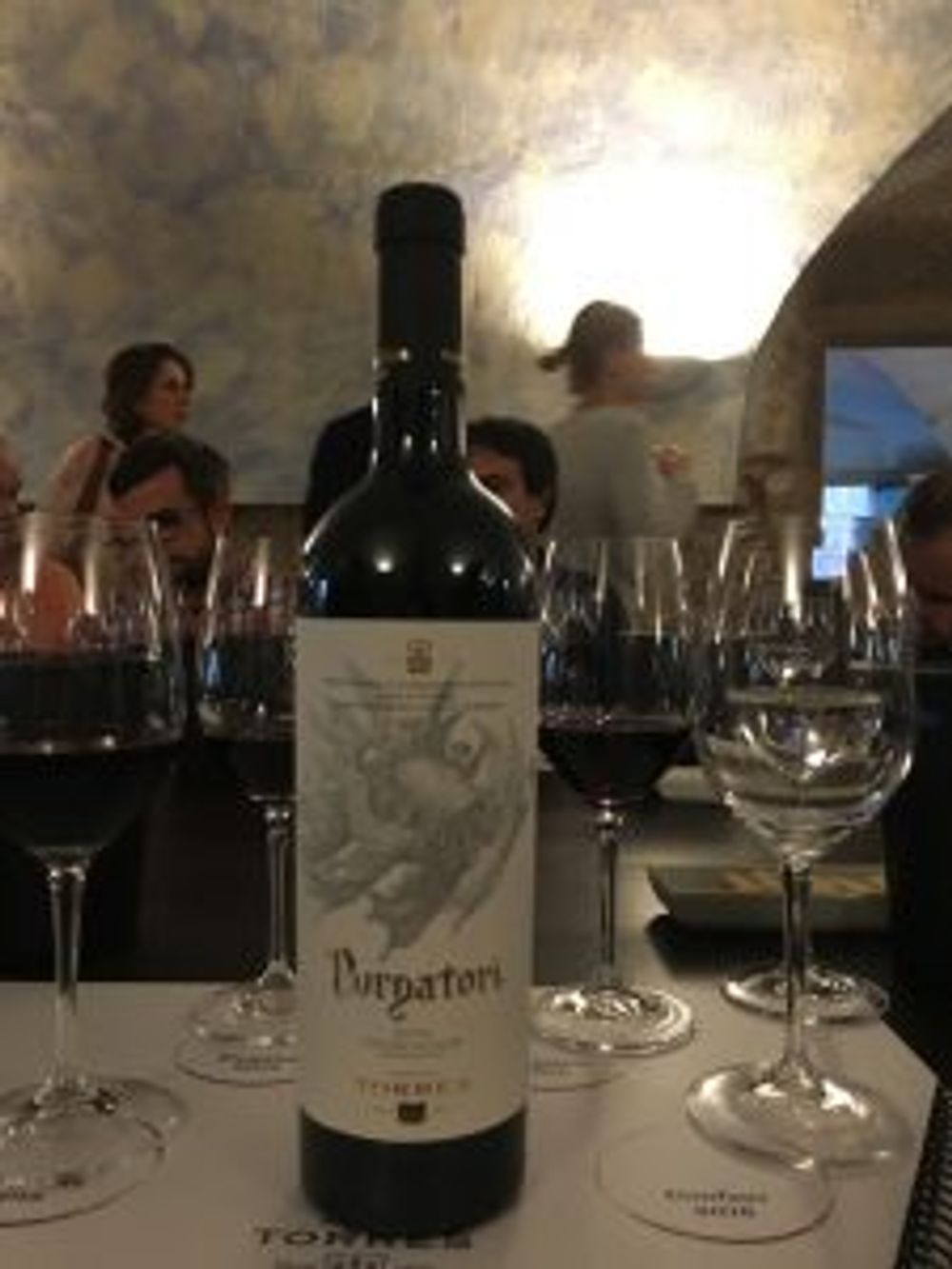
The first vintage of Purgatori has an intense, open nose of liquorice, tobacco, good structure and personality, full bodied but elegant with cherries and a full, rich and long finish. The 2013, a cool and rainy year, has more fresh red fruit on the nose and obvious ageing potential. 2014 was more like 2012 but with more rain and the wine has less concentration than the 2012/13 vintages, but red fruit, vegetal and spicy notes on the nose with a very long finish.
Despite being one of the largest exporters of Spanish wine, Familia Torres remains family-owned and run, while investing heavily in viticultural and winemaking research. By looking back into the past, they are finding solutions to the problems of the future.
